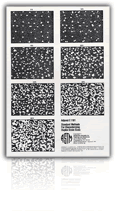Wir benötigen Ihre Einwilligung zur Verwendung der einzelnen Daten, damit Sie unter anderem Informationen zu Ihren Interessen einsehen können. Klicken Sie auf "OK", um Ihre Zustimmung zu erteilen.
ASTM E1181-02(2023)
Standard Test Methods for Characterizing Duplex Grain Sizes
Name übersetzen
NORM herausgegeben am 1.5.2023
Informationen über die Norm:
Bezeichnung normen: ASTM E1181-02(2023)
Ausgabedatum normen: 1.5.2023
SKU: NS-1142751
Zahl der Seiten: 15
Gewicht ca.: 45 g (0.10 Pfund)
Land: Amerikanische technische Norm
Kategorie: Technische Normen ASTM
Kategorie - ähnliche Normen:
Die Annotation des Normtextes ASTM E1181-02(2023) :
Keywords:
area fraction, banding, bands, duplex, grain size, necklace,, ICS Number Code 77.040.99 (Other methods of testing of metals)
Zu dieser Norm gehören folgende Ergänzungen:
Adjunct to E1181 Test Methods for Characterizing Duplex Grain Sizes
Ausgewählte Ausführung:Alle technischen Informationen anzeigen
Ergänzende Informationen
| Significance and Use | ||||||||||||||||
|
5.1?Duplex grain size may occur in some metals and alloys as a result of their thermomechanical processing history. For comparison of mechanical properties with metallurgical features, or for specification purposes, it may be important to be able to characterize grain size in such materials. Assigning an average grain size value to a duplex grain size specimen does not adequately characterize the appearance of that specimen, and may even misrepresent its appearance. For example, averaging two distinctly different grain sizes may result in reporting a size that does not actually exist anywhere in the specimen. 5.2?These test methods may be applied to specimens or products containing randomly intermingled grains of two or more significantly different sizes (henceforth referred to as random duplex grain size). Examples of random duplex grain sizes include: isolated coarse grains in a matrix of much finer grains, extremely wide distributions of grain sizes, and bimodal distributions of grain size. 5.3?These test methods may also be applied to specimens or products containing grains of two or more significantly different sizes, but distributed in topologically varying patterns (henceforth referred to as topological duplex grain sizes). Examples of topological duplex grain sizes include: systematic variation of grain size across the section of a product, necklace structures, banded structures, and germinative grain growth in selected areas of critical strain. 5.4?These test methods may be applied to specimens or products regardless of their state of recrystallization. 5.5?Because these test methods describe deviations from a single, log-normal distribution of grain sizes, and characterize patterns of variation in grain size, the total specimen cross-section must be evaluated. 5.6?These test methods are limited to duplex grain sizes as identifiable within a single polished and etched metallurgical specimen. If duplex grain size is suspected in a product too large to be polished and etched as a single specimen, macroetching should be considered as a first step in evaluation. The entire macroetched cross-section should be used as a basis for estimating area fractions occupied by distinct grain sizes, if possible. If microscopic examination is subsequently necessary, individual specimens must be taken to allow estimation of area fractions for the entire product cross-section, and to allow determination of grain sizes representing the entire cross-section as well. 5.7?These test methods are intended to be applied to duplex grain sizes. Duplex grain structures (for example, multiphase alloys) are not necessarily duplex in grain size, and as such are not the subject of these methods. However, the test methods described here for area fraction estimation may be of use in describing duplex grain structures. |
||||||||||||||||
| 1. Scope | ||||||||||||||||
|
1.1?These test methods provide simple guidelines for deciding whether a duplex grain size exists. The test methods separate duplex grain sizes into one of two distinct classes, then into specific types within those classes, and provide systems for grain size characterization of each type. 1.2?UnitsThe values stated in SI units are to be regarded as standard. No other units of measurement are included in this standard. 1.3?This standard may involve hazardous materials, operations, and equipment. This standard does not purport to address all of the safety concerns, if any, associated with its use. It is the responsibility of the user of this standard to establish appropriate safety, health, and environmental practices and determine the applicability of regulatory limitations prior to use. 1.4?This international standard was developed in accordance with internationally recognized principles on standardization established in the Decision on Principles for the Development of International Standards, Guides and Recommendations issued by the World Trade Organization Technical Barriers to Trade (TBT) Committee. |
||||||||||||||||
| 2. Referenced Documents | ||||||||||||||||
|
Empfehlungen:
Aktualisierung der technischen Normen
Wollen Sie sich sicher sein, dass Sie nur die gültigen technischen Normen verwenden?
Wir bieten Ihnen eine Lösung, die Ihnen eine Monatsübersicht über die Aktualität der von Ihnen angewandten Normen sicher stellt.
Brauchen Sie mehr Informationen? Sehen Sie sich diese Seite an.





 Cookies
Cookies
